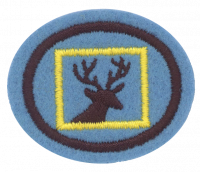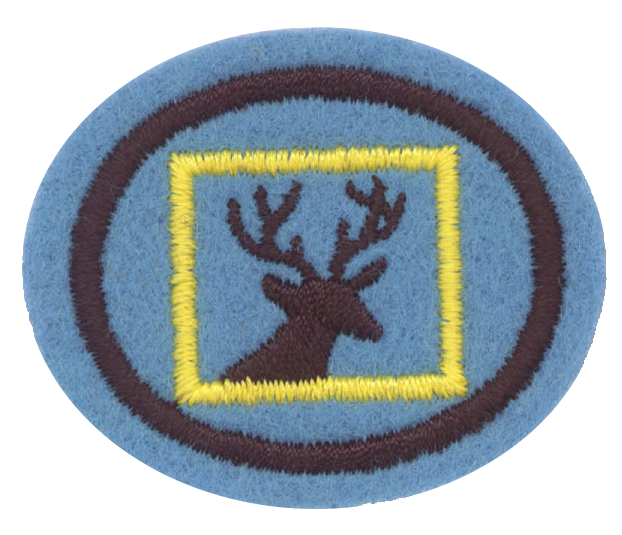Difference between revisions of "AY Honors/Glass Painting/Answer Key/es"
From Pathfinder Wiki
< AY Honors | Glass PaintingAY Honors/Glass Painting/Answer Key/es
(Created page with "</noinclude> <!-- 2. Conocer los materiales utilizados en pintura, montaje, colgantes y vasos pintados. --> * Vaso * Pintura ** Pinturas transparentes: permiten que la luz pas...") |
(Updating to match new version of source page) |
||
| (3 intermediate revisions by 2 users not shown) | |||
| Line 5: | Line 5: | ||
<!-- 1. Conocer los colores primarios, los colores secundarios y cómo mezclar los colores primarios para obtener los colores secundarios. --> | <!-- 1. Conocer los colores primarios, los colores secundarios y cómo mezclar los colores primarios para obtener los colores secundarios. --> | ||
| − | {{: | + | {{:AY Honors/Primary_and_secondary_colors/es}} |
<noinclude></noinclude> | <noinclude></noinclude> | ||
| Line 35: | Line 35: | ||
{{clear}} | {{clear}} | ||
| − | + | {{clear}} | |
| − | |||
| − | |||
| − | + | {{clear}} | |
| − | |||
| − | |||
| − | + | <noinclude></noinclude> | |
| − | <noinclude | ||
| − | |||
{{CloseReq}} <!-- 3 --> | {{CloseReq}} <!-- 3 --> | ||
{{ansreq|page={{#titleparts:{{PAGENAME}}|2|1}}|num=4}} | {{ansreq|page={{#titleparts:{{PAGENAME}}|2|1}}|num=4}} | ||
| − | <noinclude> | + | <noinclude></noinclude> |
| − | </noinclude> | + | <!-- 4. Hacer una silueta de un cuadro de pintura y montarlo para colgar. --> |
| − | <!-- 4. | ||
| − | |||
| − | |||
| − | + | {{clear}} | |
| − | |||
| − | |||
| − | + | {{clear}} | |
| − | |||
| − | |||
| − | + | {{clear}} | |
| − | |||
| − | |||
| − | + | {{clear}} | |
| − | |||
| − | |||
| − | |||
| − | |||
| − | |||
| − | |||
| − | |||
| − | |||
| − | |||
| − | |||
| − | |||
| − | |||
| − | + | <noinclude></noinclude> | |
| − | <noinclude | ||
| − | |||
{{CloseReq}} <!-- 4 --> | {{CloseReq}} <!-- 4 --> | ||
{{ansreq|page={{#titleparts:{{PAGENAME}}|2|1}}|num=5}} | {{ansreq|page={{#titleparts:{{PAGENAME}}|2|1}}|num=5}} | ||
| − | <noinclude> | + | <noinclude></noinclude> |
| − | </noinclude> | + | <!-- 5. Hacer una pintura a mano en un espejo removiendo la parte posterior que recubre el espejo, pintar la imagen en la parte posterior del espejo de vidrio. --> |
| − | <!-- 5. | ||
| − | |||
| − | |||
| − | + | {{clear}} | |
| − | |||
| − | |||
| − | + | {{clear}} | |
| − | |||
| − | |||
| − | + | <noinclude></noinclude> | |
| − | <noinclude | ||
| − | |||
{{CloseReq}} <!-- 5 --> | {{CloseReq}} <!-- 5 --> | ||
| − | <noinclude> | + | <noinclude></noinclude> |
| − | </noinclude | ||
| − | |||
| − | |||
| − | |||
| − | + | {{clear}} | |
| − | |||
| − | |||
| − | + | ==Referencias== | |
| − | == | + | <noinclude></noinclude> |
| − | |||
| − | |||
| − | |||
| − | <noinclude | ||
| − | |||
{{CloseHonorPage}} | {{CloseHonorPage}} | ||
Latest revision as of 22:49, 14 July 2022
Pintura sobre vidrio
Nivel de destreza
1
Año
1938
Version
10.11.2025
Autoridad de aprobación
Asociación General
1
Conocer los colores primarios, los colores secundarios y cómo mezclar los colores primarios para obtener los colores secundarios.
| Mezcle esto | con esto | para hacer | ||
|---|---|---|---|---|
| Amarillo | + | Rojo | = | Anaranjado |
| Azul | + | Amarillo | = | Verde |
| Rojo | + | Azul | = | Púrpura |
2
Conocer los materiales utilizados en pintura, montaje, colgantes y vasos pintados.
- Vaso
- Pintura
- Pinturas transparentes: permiten que la luz pase a través de ellas.
- Pinturas opacas: logran el color deseado, pero no son transparentes.
- Otros medios para efectos helados, iridiscentes o crepitantes.
- Pincel
- Esponjas: se pueden utilizar en lugar de o además de los pinceles. Buenas para si quiere pintar toda una superficie de un solo color.
- Alcohol isopropílico: para limpiar el vidrio antes de pintar. ¡No pinte vidrios sucios!
- Toalla de papel: también para la limpieza.
- Estarcidos adhesivos (opcional)
- Patrones: se pueden colocar en el interior de un vaso y luego se puede copiar el diseño (similar al trazado).
- Enganches y cuerdas con algún método para adjuntarlos a su obra de arte.
3
Realizar y exhibir un vidrio pintado para cada uno de los siguientes diseños: animales, flores o un paisaje marino o terrestre.
4
Hacer una silueta de un cuadro de pintura y montarlo para colgar.
5
Hacer una pintura a mano en un espejo removiendo la parte posterior que recubre el espejo, pintar la imagen en la parte posterior del espejo de vidrio.


